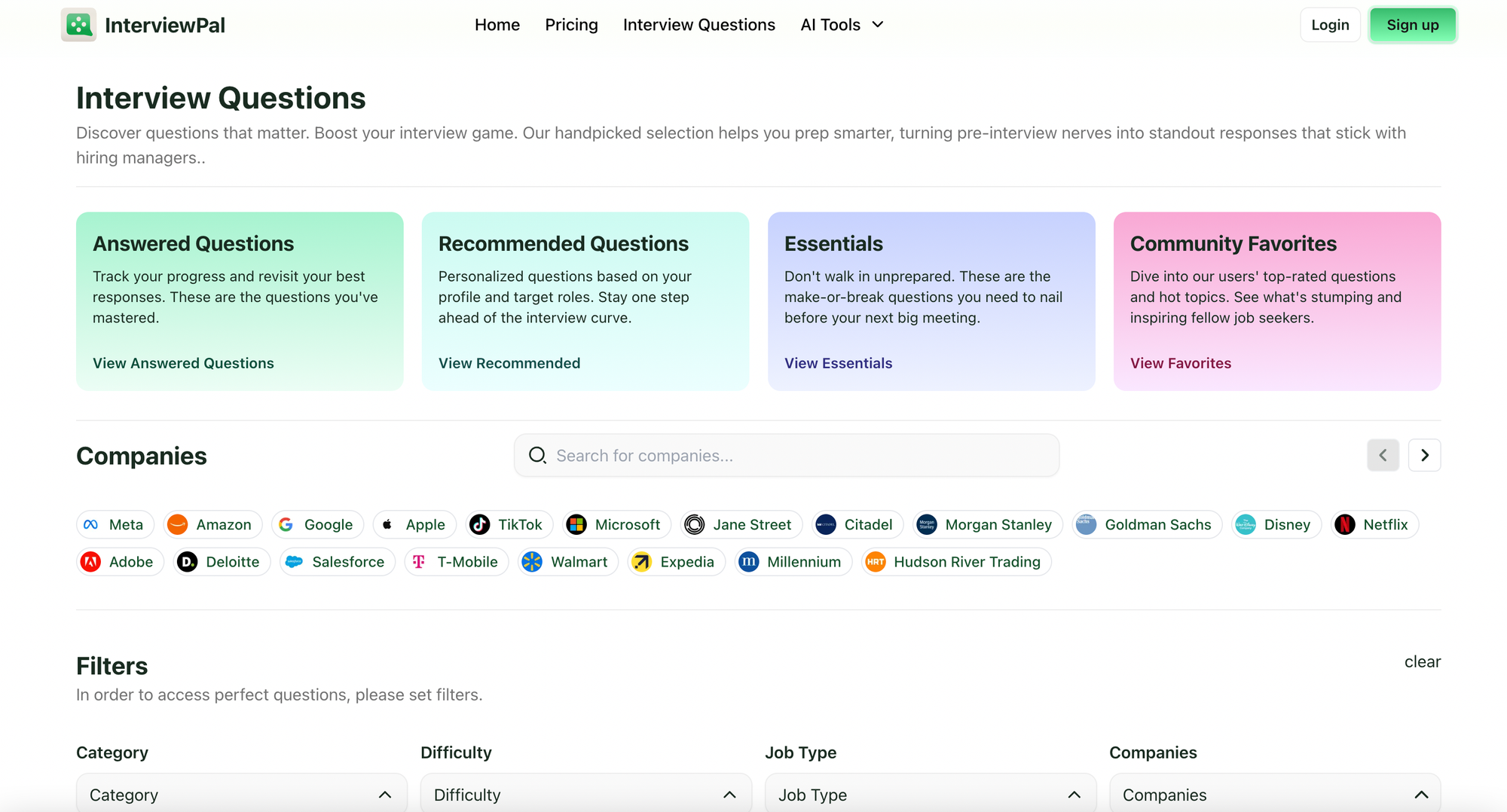In many customer-facing roles, interviewers will ask, “Can you give an example of a time when you went above and beyond for a customer?” This question allows hiring managers to gauge your dedication to customer service, your problem-solving abilities, and your willingness to put in extra effort to satisfy the client. Answering this question thoughtfully not only helps you stand out but also shows that you can deliver exceptional service, which is often a key factor in landing the job.In this post, we’ll walk through how to craft a compelling answer, why employers ask this question, and some practical examples that can guide you in preparing your own response. Additionally, we’ll explore how platforms like InterviewPal can help you refine your answers and boost your interview performance.
Why Do Employers Ask About Going Above and Beyond?
When interviewers ask for an example of going above and beyond for a customer, they’re looking for a few key things:
- Commitment to Customer Satisfaction: They want to see that you’re dedicated to ensuring customers are satisfied, even if it means putting in extra effort.
- Problem-Solving Skills: How do you handle situations when standard procedures aren’t enough? Can you think creatively to solve problems?
- Initiative and Proactivity: Going above and beyond requires you to take initiative. It’s not about following a script—it’s about recognizing opportunities to provide value and acting on them.
- Emotional Intelligence: How well do you empathize with customers? Are you able to understand their needs and find solutions that not only solve their problems but also create a positive experience?
Employers know that candidates who are willing to go the extra mile will contribute to a more loyal customer base and a stronger company reputation.
How to Structure Your Answer
Crafting a strong response requires a clear and concise structure. One of the most effective ways to present your answer is by using the STAR method:
- Situation: Set the stage by describing the context or the customer’s problem.
- Task: Explain your role and what you were tasked with.
- Action: Describe the specific steps you took to go above and beyond.
- Result: Highlight the positive outcome, especially how the customer benefited from your actions.
Step 1: Start With the Situation
When answering, start by describing the situation and the challenge at hand. Make sure it’s a scenario where the customer faced an issue or had specific needs that were outside the scope of standard service. It could be a difficult customer, a time-sensitive request, or an unexpected obstacle.
Example: "In my previous role as a customer service representative for an e-commerce company, a customer reached out because they hadn’t received their order. It was an urgent situation as the order contained items they needed for an event happening the next day."
Step 2: Explain Your Role (Task)
Once the situation is clear, move on to your role and the expectations. Describe what the normal task would involve, giving the interviewer context for how you went beyond what was expected.
Example: "Normally, I would have directed them to our tracking system or issued a refund, but given the time-sensitive nature of their issue, I felt it was important to do more."
Step 3: Detail the Actions You Took
This is the most important part of your answer. Go into detail about the specific actions you took to exceed the customer’s expectations. Highlight your initiative, creativity, and problem-solving skills. Focus on what you did differently from the standard protocol.
Example: "I immediately contacted our warehouse to see if the order could be expedited. Unfortunately, there was no way to get it there in time, so I took the initiative to find a local store near the customer that had the same items. I arranged for them to pick it up that same day, and I also issued them a gift card for their next purchase as a goodwill gesture."
Step 4: Highlight the Results
The final step is to describe the outcome. What was the positive result of your actions? How did the customer react? What benefit did your extra effort bring to the company? This is your chance to showcase the value of going above and beyond.
Example: "The customer was extremely grateful, and they were able to attend their event without any issues. Not only did they send a positive review, but they also became a repeat customer, making several large orders over the next few months."
Common Examples of Going Above and Beyond for a Customer
If you’re looking for inspiration or examples of going above and beyond, here are some common scenarios you can adapt based on your own experiences:
1. Personalizing the Customer Experience
Going above and beyond doesn’t always mean solving a big problem—it can also mean providing a personalized experience that makes the customer feel valued.
Example: "A frequent customer mentioned during a call that it was their child’s birthday. When I sent them their usual order, I included a small gift for their child, and they were absolutely delighted. This small gesture strengthened our relationship with the customer."
2. Taking Ownership of a Problem
Sometimes, going above and beyond means taking ownership of a problem from start to finish, even if it’s outside your usual responsibilities.
Example: "A customer’s complaint required assistance from another department, but instead of transferring them, I stayed on the line and coordinated between departments. I ensured their issue was resolved and followed up the next day to make sure they were satisfied."
3. Providing Extra Resources or Information
In some cases, a customer might need more than just a quick answer—they may need additional guidance or resources. Providing these without being asked can make a big difference.
Example: "A customer was struggling with setting up a product they purchased. Instead of simply sending them a link to the manual, I created a personalized step-by-step video tutorial. They appreciated the extra effort and mentioned they would recommend our service to their friends."
4. Resolving an Issue Outside of Normal Business Hours
Helping a customer in a way that goes beyond the usual 9-5 hours shows dedication and commitment to ensuring their needs are met.
Example: "I once had a customer who urgently needed support with a technical issue late in the evening, well outside of our normal hours. I took it upon myself to stay on the phone and resolve the issue, ensuring they didn’t face any downtime."
Common Mistakes to Avoid
While there are many opportunities to showcase your dedication to going above and beyond, there are a few pitfalls to avoid when answering this question:
1. Being Too Vague
If you say something generic like, “I always go above and beyond for customers,” without giving specifics, your answer won’t have much impact. Make sure to provide concrete examples.
2. Overemphasizing One-Time Actions
While it’s great to show a specific example, don’t give the impression that going above and beyond is a rare event for you. You want to make it clear that this is part of your regular approach to customer service.
3. Neglecting the Result
It’s important to not only explain what you did but also the outcome of your actions. Did the customer leave a positive review? Did they return to make another purchase? Be sure to highlight the positive impact of your efforts.
4. Focusing Too Much on Personal Gain
Going above and beyond should be about the customer, not you. Avoid framing your answer in a way that makes it seem like you’re more focused on personal recognition than customer satisfaction.
How Personality Traits Contribute to Going Above and Beyond
Certain personality traits can make you more inclined to go the extra mile for a customer. If you have any of these qualities, it’s worth highlighting them in your answer:
- Empathy: Understanding the customer’s feelings and putting yourself in their shoes can lead you to provide a more thoughtful solution.
- Proactivity: Taking initiative before the customer asks for help is a hallmark of going above and beyond.
- Problem-Solving: Being resourceful and coming up with creative solutions when standard processes don’t work is key to delivering exceptional service.
- Attention to Detail: Noticing small details can make a big difference, such as recognizing a customer’s preferences or anticipating their needs before they express them.
Sample Answer for “Give an Example of Going Above and Beyond for a Customer”

Let’s put it all together in a sample response:
"In my previous role at a retail store, a customer came in looking for a specific item that was out of stock. They needed it for a special event that weekend, so I could see how important it was to them. Instead of just offering to place an order and wait for it to come in, I called nearby stores to see if they had it in stock, but no one did. I then took the initiative to call the manufacturer directly and arranged for the item to be delivered to the store within 48 hours. The customer was able to pick it up the day before their event, and they were extremely grateful. They ended up becoming a regular customer and even recommended our store to others."
How InterviewPal Can Help You Prepare for This Question
At InterviewPal, we know that answering questions about customer service can be challenging, especially when you're asked to provide specific examples. That’s why we’ve designed our platform to help you:
- Practice real-life scenarios: Our mock interview feature gives you the chance to rehearse your answer and get feedback on how well you're showcasing your initiative and customer service skills.
- Receive personalized feedback: Our AI-powered tool will analyze your responses and offer suggestions on how to improve your delivery, helping you refine your answer to perfection.
- Build confidence: By practicing with InterviewPal, you'll feel more prepared walking into your interview, ready to provide clear, compelling examples of how you go above and beyond for customers.
Follow-Up Email After Interview Generator
Write a polished, professional follow-up email in seconds. Thank the interviewer, show genuine interest, and increase your chances of getting a callback — effortlessly.
Generate My Follow-Up Email →Just enter your interview details — no login required.
How to Master the Art of Going Above and Beyond for Customers
Answering the question, “Can you give an example of going above and beyond for a customer?” requires a mix of reflection, self-awareness, and storytelling. By using the STAR method, providing real-life examples, and focusing on the customer’s experience, you can craft an answer that not only highlights your dedication but also shows your potential employer that you’re the type of candidate who always strives for excellence.With InterviewPal, you can prepare for this and other challenging questions, ensuring that you walk into your interview with confidence, ready to showcase your best self.



